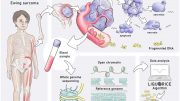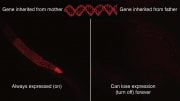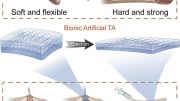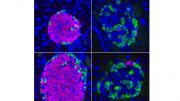
Hypospadias is a congenital abnormality in males where the opening of the urethra is not located at the tip of the penis. Instead, it is located on the underside of the penis or even in the scrotum.
The alarming rise in the frequency of hypospadias, the most common genital malformation in male infants, is believed to be caused by environmental factors such as exposure to toxic substances that alter epigenetic programming in the developing penis.
A recent study published in Science Reports has revealed a direct connection between hypospadias and the presence of epigenetic alterations. The analysis, led by Washington State University, found that hypospadias tissue samples showed changes to the molecular factors and processes surrounding DNA that determine gene behavior. In contrast, no epigenetic alterations were found in penile tissue samples from healthy babies without hypospadias.
The research helps answer long-standing questions surrounding the increased frequency and potential root cause of hypospadias, a birth defect in which the opening of the urethra is located on the underside of the penis instead of the tip.
“Previous researchers have done extensive analyses and not found any kind of genetic DNA sequence mutations that correlate with the presence of the disease, so there has always been a big question mark regarding where it comes from,” said Michael Skinner, corresponding senior author of the study and a WSU professor of biology. “Our study shows the etiology of the disease is environmentally driven through epigenetics rather than a result of changes to the DNA sequence. It gives us a clearer picture of what is going on.”
While the research is still in an early stage of development, it could ultimately lead to earlier detection and better clinical management of hypospadias, the prevalence of which has increased by 11.5% in recent decades, making it the most common genital malformation in newborn males.
One potential path forward would be to identify a specific epigenetic biomarker that could be collected with a simple cheek swab from the parents of a baby to determine the likelihood of the newborn developing a hypospadia.
“This is not so far-fetched,” Skinner said. “We have identified these types of biomarkers for other diseases. Early detection means they could do clinical management sooner which could result in fewer complications for the baby and more peace of mind for the parents.”
A major question that remains to be answered is specifically what environmental factors (i.e. toxicants) are promoting the epigenetic alterations that are causing hypospadias.
One potential culprit the researchers mentioned in the study is a pharmaceutical drug called diethylstilbestrol (DES) that was used in the late 50s and early 60s to ease the later stages of pregnancy for women.
“There was never really evidence that it helped with pregnancy, but after the fact, doctors started to find severe developmental effects from the drug on babies. Hypospadias was one of the issues,” Skinner said. “Unfortunately, because epigenetic changes caused by drugs like this and other environmental toxicants are epigenetically heritable, they are often passed down from one generation to the next after they are contracted. Over time, the detrimental effects can persist and spread.”
Another interesting finding from the study was that tissue samples with mild cases of hypospadias had a greater degree of epigenetic alterations than tissue samples with more severe versions of the disease.
“What this suggests is that cells with really severe epigenetic alterations are probably dying and not surviving whereas a mild case of hypospadia will have lots of these diseased cells still alive,” Skinner said. “This gives us new insights into how epigenetic control is affecting tissue development.”
Reference: “Role of epigenetics in the etiology of hypospadias through penile foreskin DNA methylation alterations” by Martin Kaefer, Richard Rink, Rosalia Misseri, Paul Winchester, Cathy Proctor, Millissia Ben Maamar, Daniel Beck, Eric Nilsson and Michael K. Skinner, 11 January 2023, Scientific Reports.
DOI: 10.1038/s41598-023-27763-5
The study was funded by the John Templeton Foundation.









Be the first to comment on "Researchers Have Identified the Cause of Alarmingly Common Penis Birth-Defect"